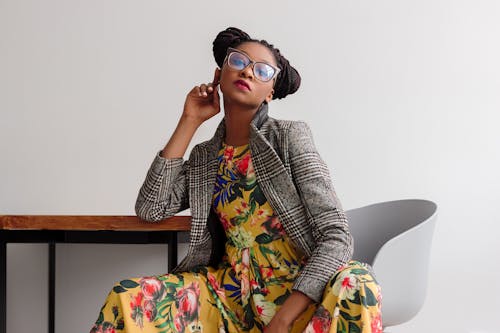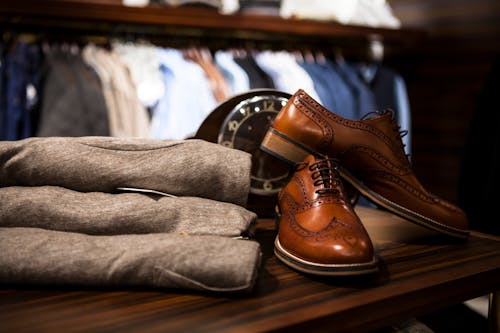
Introduction
The 1990s was a transformative decade for fashion, marked by a blend of rebelliousness, minimalism, and eclectic styles that reflected the social, economic, and technological changes of the era. From grunge and minimalism to the rise of supermodels and iconic designer collaborations, this article explores the diverse and influential fashion trends that defined the 1990s.
Grunge: The Anti-Fashion Movement
- Origin and Influence
- Seattle Sound: Grunge fashion emerged from the music scene in Seattle, characterized by bands like Nirvana and Pearl Jam. It embraced a non-conformist, anti-establishment aesthetic.
- Key Elements: Oversized flannel shirts, ripped jeans, combat boots, and unkempt hairstyles defined grunge style. The look was effortless and aimed to reject mainstream fashion ideals.
- High Fashion Adaptation
- Runway Influence: Designers such as Marc Jacobs and Anna Sui incorporated grunge elements into their collections, elevating the style from underground subculture to high fashion status.
- Controversy and Criticism: The commercialization of grunge sparked debate about authenticity and cultural appropriation within the fashion industry.
Minimalism: Simplicity and Elegance
- Calvin Klein and Minimalist Design
- Clean Lines: Calvin Klein’s minimalist aesthetic emphasized clean lines, neutral colors, and simple silhouettes. The focus was on quality fabrics and impeccable tailoring.
- Celebrity Endorsement: Celebrities like Kate Moss became synonymous with minimalist fashion, embodying effortless chic and understated elegance.
- Japanese Influence
- Rei Kawakubo and Yohji Yamamoto: Japanese designers like Rei Kawakubo of Comme des Garçons and Yohji Yamamoto introduced avant-garde minimalist designs to the global fashion stage.
- Deconstruction and Asymmetry: Their collections challenged traditional notions of beauty with asymmetrical cuts, layered textures, and unconventional silhouettes.
The Rise of Supermodels and Fashion Icons
- Supermodel Era
- Fab Five: Cindy Crawford, Naomi Campbell, Linda Evangelista, Christy Turlington, and Claudia Schiffer dominated the fashion scene. They were known for their iconic runway walks, magazine covers, and endorsements.
- Versatility and Influence: Supermodels transcended the runway, becoming cultural icons and setting beauty standards for a generation.
- Versace and Gianni’s Glamour
- Bold Prints and Luxury: Gianni Versace’s designs epitomized 1990s glamour with vibrant prints, bold colors, and luxurious fabrics. His runway shows were extravagant spectacles, blending fashion with celebrity culture.
- Legacy: Versace’s impact on fashion extended beyond the decade, influencing future trends and the concept of fashion as entertainment.
Streetwear and Hip-Hop Influence
- Urban Fashion
- Hip-Hop Style: Hip-hop culture influenced fashion with baggy jeans, oversized jerseys, tracksuits, and sneakers. Brands like Tommy Hilfiger and FUBU capitalized on the popularity of streetwear.
- Cross-Cultural Appeal: Urban fashion transcended racial and socioeconomic boundaries, becoming a global phenomenon embraced by youth culture worldwide.
- Skate and Surf Culture
- California Cool: Skate and surf culture influenced fashion with relaxed fits, graphic tees, board shorts, and vibrant colors. Brands like Quiksilver and Billabong catered to the active lifestyle of young enthusiasts.
Designer Collaborations and High-Low Fashion
- Target and Designer Capsules
- Affordable Luxury: Designer collaborations with retailers like Target introduced high-end fashion to a broader audience at accessible price points.
- Democratization of Fashion: Consumers could purchase pieces from renowned designers such as Isaac Mizrahi and Mossimo Giannulli without breaking the bank.
- H&M and Fast Fashion
- Quick Turnaround: H&M pioneered the concept of fast fashion with frequent collections that mirrored runway trends. The democratization of fashion allowed consumers to stay on-trend at affordable prices.
- Criticism and Sustainability Concerns: Fast fashion faced criticism for its environmental impact and labor practices, sparking debates about ethical consumption.
Technological Advancements and Fashion Media
- Internet and Digital Influence
- Emerging Platforms: The rise of the internet and digital media transformed fashion communication. Websites, blogs, and social media platforms provided instant access to trends, runway shows, and fashion news.
- E-commerce Boom: Online shopping revolutionized retail, offering convenience and global reach. Brands adapted to digital platforms, enhancing customer engagement and sales.
- Fashion Magazines and Editorial Influence
- Editorial Powerhouses: Magazines like Vogue, Harper’s Bazaar, and Elle shaped fashion narratives and trends through editorial spreads and celebrity endorsements.
- Influence of Fashion Editors: Editors-in-chief and stylists became tastemakers, curating collections and predicting trends that resonated with readers and consumers.
Pop Culture and Fashion Icons
- Film and Television
- Influential Characters: Characters from films like “Clueless” and TV shows like “Friends” influenced fashion with their distinctive styles. Cher Horowitz’s preppy chic and Rachel Green’s casual elegance became iconic.
- Music and Fashion Fusion
- Music Videos: Artists such as Madonna, TLC, and Spice Girls used music videos as platforms to showcase fashion trends and make style statements.
- Cross-Pollination: The synergy between music and fashion contributed to the commercialization and global dissemination of 1990s trends.

Conclusion
The 1990s was a decade of fashion diversity, innovation, and cultural influence. From the grunge movement’s rebellion against traditional fashion norms to the rise of supermodels and minimalist elegance, each trend and event left an indelible mark on the industry. The fusion of streetwear with hip-hop culture, designer collaborations with mass retailers, and the digital revolution transformed how fashion was perceived, consumed, and communicated. As we reflect on the legacy of 1990s fashion, its impact continues to resonate in contemporary trends and the evolving landscape of global style. Through its bold experimentation and cultural crossovers, the fashion of the 1990s remains a testament to creativity, expression, and the enduring allure of nostalgia.














